Downey, CA Pollen and Allergy Report for Summer 2023
Pollen Allergy Trends in Downey, CA
When is pollen lowest in Downey, CA?

February
Lowest month total PPM
Avg. PPM
When is pollen highest in Downey, CA?

January
Highest month total PPM
Avg. PPM
How does pollen in Downey, CA compare to California?
Downey has a lower average PPM than the state of California.
Downey yearly avg PPM:
California yearly avg PPM:
How does pollen in Downey, CA compare to the USA?
Downey has a lower average PPM than the USA.
Downey yearly avg PPM:
USA yearly avg PPM:
Is pollen worse this year in Downey, CA?
Spring 2023 was about the same as 2022.
Spring 2023 PPM:
Spring 2022 PPM:
Average PPM in Downey, CA
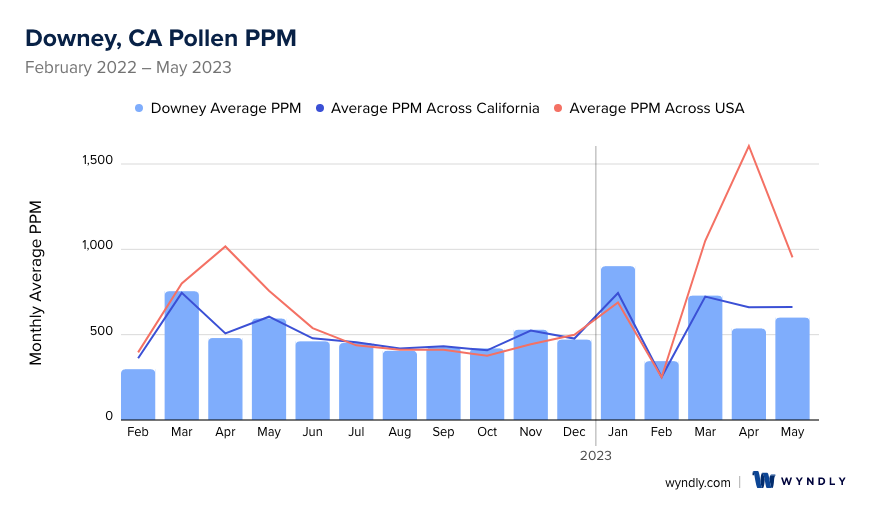
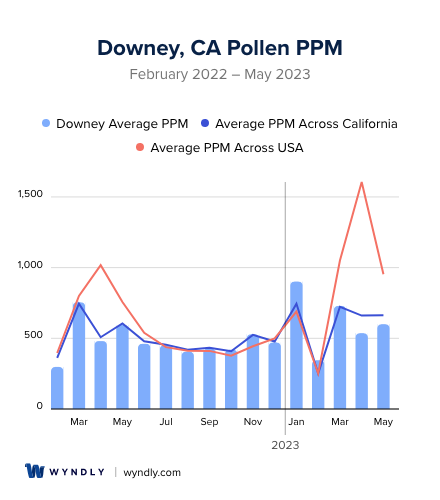
Downey, CA Pollen and Allergy Breakdown by Month
Grass
When is grass pollen highest in Downey, CA?
May has the highest grass pollen in Downey, CA with an average PPM of
When is grass pollen lowest in Downey, CA?
December has the lowest grass pollen in Downey, CA with an average PPM of
Tree
When is tree pollen highest in Downey, CA?
March has the highest tree pollen in Downey, CA with an average PPM of
When is tree pollen lowest in Downey, CA?
August has the lowest tree pollen in Downey, CA with an average PPM of
Weed
When is weed pollen highest in Downey, CA?
November has the highest weed pollen in Downey, CA with an average PPM of
When is weed pollen lowest in Downey, CA?
February has the lowest weed pollen in Downey, CA with an average PPM of
Downey, CA Pollen Monthly Breakdown by Pollen Type
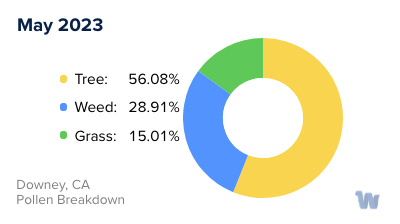
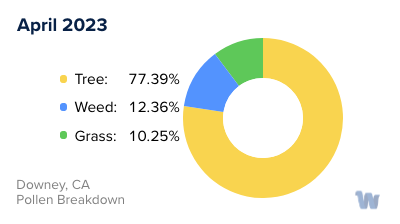
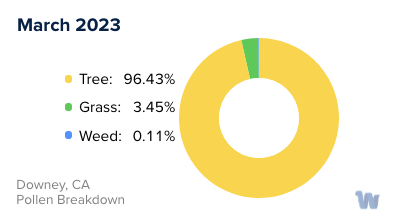
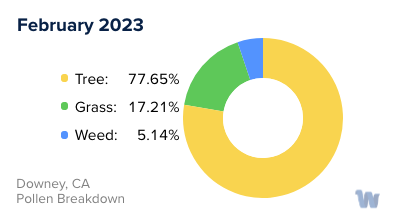
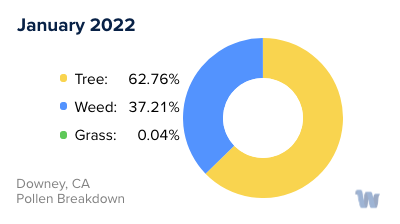
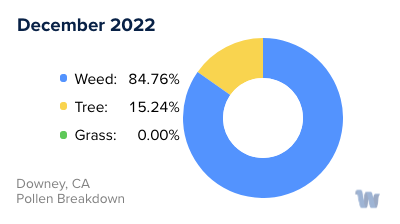
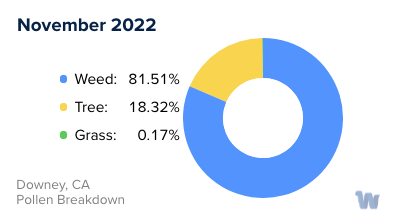
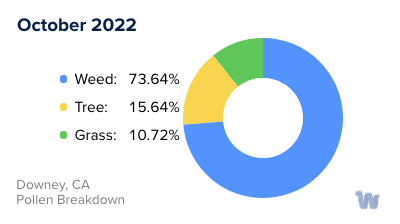
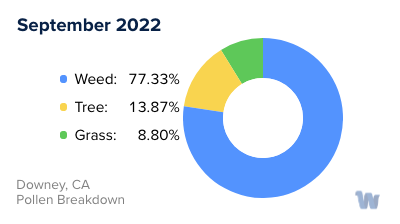
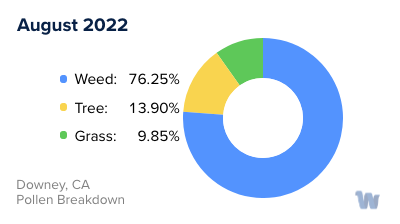
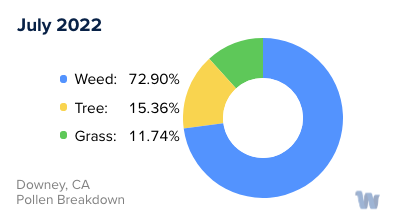
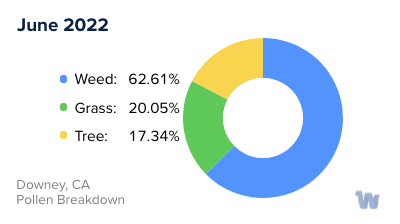
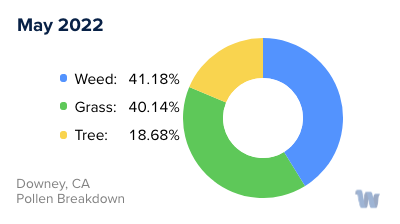
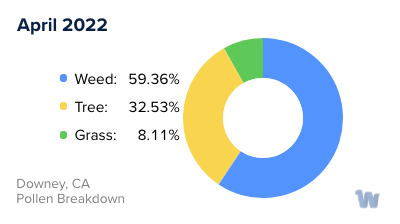
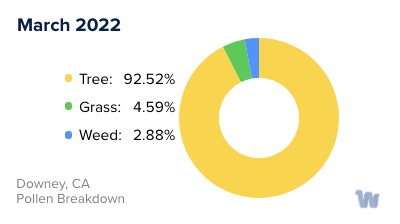
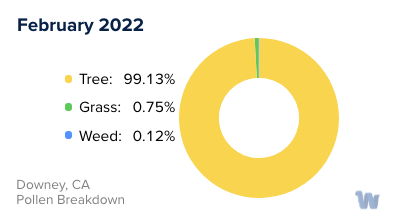
Pollen and Hay Fever in Downey, CA
Downey, California, like many parts of the Golden State, experiences a vibrant, yet challenging, dance with pollen throughout the year. The city’s climate, combined with its diverse flora, results in a pollen season that spans late January to early October. This means for a significant portion of the year, residents may grapple with the impacts of pollen allergies and hay fever.
In Downey, a variety of trees, grasses, and weeds produce allergenic pollen. A day’s pollen count includes all types of pollen, but individual pollens may still be high even when the overall count is low. Among the most common culprits are bluegrass, ryegrass, sagebrush, ragweed, Russian thistle, mulberry, oak, olive, ash, cedar, and eucalyptus. Each plant type has its own unique blooming season, contributing to the extended allergy season.
Pollen allergies in Downey, and California more generally, tend to flare up in the spring, summer, and fall. The peak periods for pollen counts typically fall in April, May, and September. Despite the city’s relatively mild winters, there’s still a reprieve from seasonal allergies in the winter months, giving residents a much-needed break before the cycle begins anew.
While Downey's unique mix of allergenic plants leads to a longer-than-average pollen season, it also results in a rich and diverse landscape that defines the city’s natural beauty. Understanding the rhythms of the pollen season, the types of pollen, and when they are most prevalent, can help residents better navigate the challenges of pollen allergies and hay fever.

